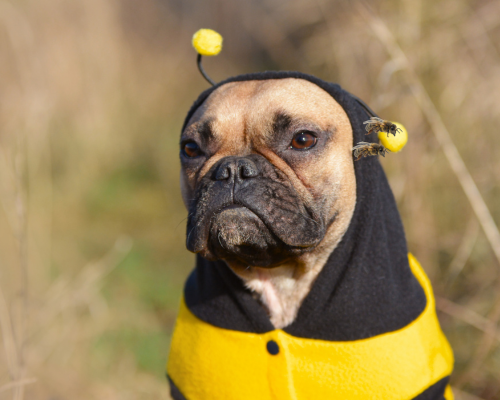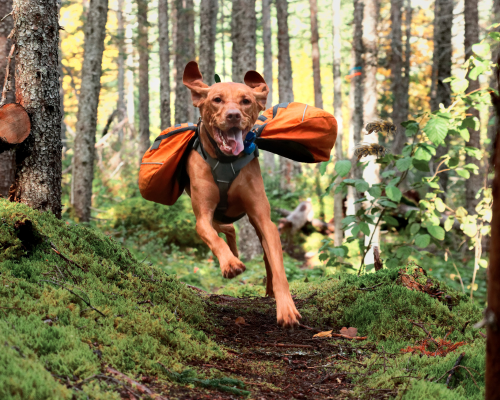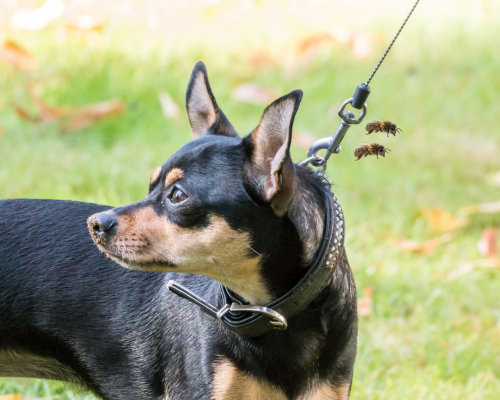Why Do Dogs Eat Bees? Must Know!
Why Do Dogs Eat Bees? Must Know!


By: Sarah Hodgson
January 1, 1970
- Posted in Dogs
Click To Skip Ahead
As a dog owner I'm sure you noticed your dog showing curiosity towards certain things. We all know that dogs are intrigued by moving objects, and a buzzing bee is no exception. But what happens when their curiosity leads them to swallow a bee? This quirky and somewhat alarming behavior of dogs is what we're going to be discussing in this article.
In this exciting blog post, we'll explore the curiosity of dogs, the dangers of dogs eating bees, what to do if your dog eats a bee, how to prevent your dog from eating bees, and when to take your dog to the veterinarian. So, sit back, and let's dive in.
Quick Answer
Dogs are simply curious. Perhaps it's the constant buzzing or the movement. However, bees can be dangerous if swallowed or even worse accidentally sting the dog while being swallowed.
The Curiosity of Dogs
Dogs are naturally curious animals. Their excellent senses of smell and sight, coupled with their innate desire to explore, often lead them into all kinds of adventures. Sometimes, these adventures include chasing after, and occasionally eating, bees. You see, to a dog, a bee is just another intriguing moving object. The bee's buzzing sound, its erratic flight pattern, and its bright color all contribute to making it a target for our furry friends.
But this isn't just a random act of curiosity. Dogs are predators by nature, and their hunting instincts are triggered by movement. A bee, with its quick and unpredictable movements, is an irresistible challenge for a dog. The bee's buzzing sound also stimulates the dog's acute sense of hearing, drawing them in like a moth to a flame.
However, this curiosity and hunting instinct can sometimes put our dogs at risk. Dogs lack the understanding that bees are not just harmless toys, but creatures that can fight back when threatened. Which leads us to our next point.

The Dangers of Dogs Eating Bees
While a bee might seem like a fun, moving target to a dog, it can pose serious risks. The most obvious danger is the bee's sting. When a dog tries to eat a bee, it risks getting stung in the mouth or throat. This can be extremely painful for dogs and can even lead to serious complications.
A bee sting in the dog's mouth can cause swelling and discomfort, making it difficult for the dog to eat or drink. If the bee stings the dog's throat, it can result in swelling that may obstruct the dog's airway. In rare cases, a bee sting can also cause an allergic reaction in dogs, just like in humans. This allergic reaction, known as anaphylaxis, can be life-threatening if not treated immediately.
Even if the bee doesn't sting the dog, eating bees is not good for dogs. Dogs can digest Bees just like any other food. However, digesting them can lead to digestive problems, including upset stomach and diarrhea.
What to Do If Your Dog Eats a Bee?
As we discussed above, eating bees is harmful for your dog in many ways. If you notice that your dog has eaten a bee, don't panic. First, check your dog for any signs of distress. These could include excessive drooling, pawing at the mouth, difficulty breathing, or hives on the skin. If you notice any of these symptoms, it's important to seek veterinary care immediately.
If your dog appears fine, continue to monitor them closely for the next several hours. Some reactions to bee stings can be delayed. In the meantime, offer your dog some water to help wash down the bee and soothe their throat.
Remember, as much as you might want to, do not try to induce vomiting. The bee's stinger could still be attached, and vomiting could cause your dog to get stung again.
How to Prevent Your Dog from Eating Bees
Prevention is always better than cure. To prevent your dog from eating bees, try to limit their exposure to areas where bees are common. This might mean keeping your dog on a leash during walks, or supervising them while they're in the garden.
You can also provide your dog with plenty of toys to keep them entertained. This can help distract them from chasing after bees. Additionally, training your dog to respond to commands like "leave it" or "come" can be very helpful in preventing them from eating bees.
When to Take Your Dog to the Veterinarian
If your dog has been stung by a bee and is showing signs of distress, it's crucial to take them to the vet immediately. Signs to look out for include difficulty breathing, excessive drooling, vomiting, diarrhea, lethargy, or loss of consciousness. These could indicate a severe allergic reaction, which requires immediate medical attention.
Even if your dog appears fine after eating a bee, it's a good idea to contact your vet. They can advise you on what to watch out for and what to do to ensure your dog's safety and comfort.

The Bottom Line
Even though dogs eating bees might sound amusing, it can have serious consequences. Remember, if your dog has eaten a bee and is showing signs of distress, seek veterinary care.
So there you have it - a deep dive into why dogs eat bees and what you can do about it. I hope this article has been informative and helpful. Remember, our dogs rely on us to keep them safe and healthy, so let's do our best for them!

Subscribe to Petfluence!
Get updates on the latest posts and more from Petfluence straight to your inbox.